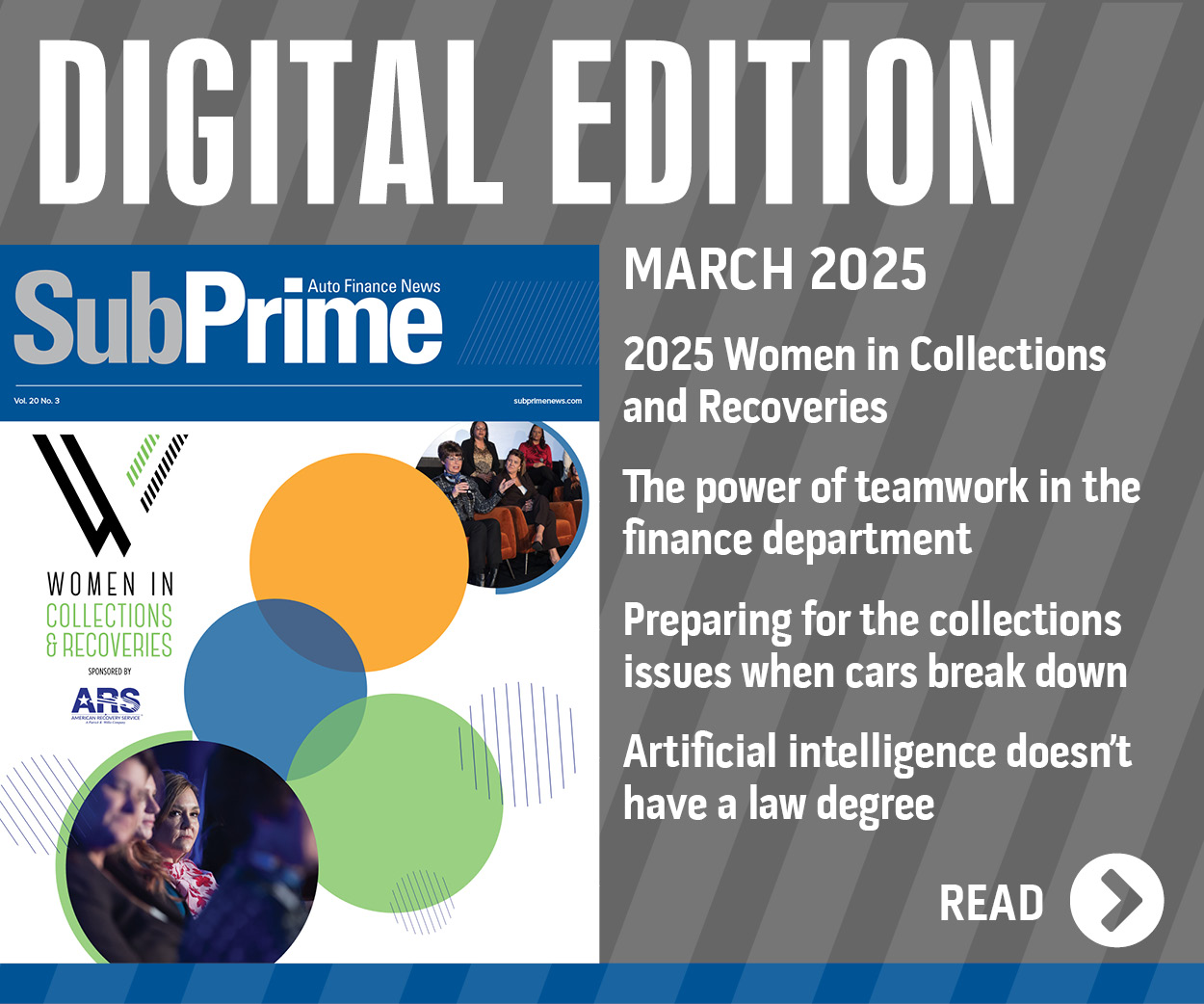S&P Global Ratings offers 2025 forecast, answers worldwide economic questions

Let’s take a worldwide economic outlook courtesy of S&P Global Ratings, which touched on both domestic and international trends that could eventually impact automotive financing and retailing.
Analysts said last week that economic soft landings in many major economies and further policy rate cuts should continue to support global credit conditions in 2025.
With easing inflation, resilient labor markets, and sturdy consumer spending bolstering economic activity in most developed markets, S&P Global Ratings expects steady growth next year. Analysts forecast global economic expansion of 3% in 2025 as growth slows in the U.S. and China (the world’s two biggest economies), the eurozone continues to recover and emerging markets find their footing.
“At the same time, central banks have started lowering their key interest rates, and we expect more monetary policy easing to come, albeit at a variable pace among jurisdictions,” said Alexandre Birry, global head of S&P Global Ratings Credit Research & Insights. “More importantly, the descent will be slower than the rise, with rates certain to settle at higher levels than we saw during the substantial stretch of cheap money after the global financial crisis.”
S&P Global Ratings forecasted a decline in defaults, albeit still at a slower pace than the rise. Analysts explained the lowest-rated borrowers continue to face the strains of still-elevated borrowing costs, lingering effects of permanently higher prices on consumers’ purchasing power, and heightened geopolitical risk — most notably, increasing protectionism that will weigh on global trade.
“Deepening geopolitical rifts pose the biggest risk to an improving credit landscape,” said Gregg Lemos-Stein, chief analytical officer for corporate ratings at S&P Global Ratings. “The Russia-Ukraine war’s continuation into the end of its third year, the intensification of the conflict in the Middle East, and the propagation of domestic polarization in certain markets could disrupt trade and investment flows, roil financial markets, and force governments to increase defense spending amid already-stretched budgets.”
S&P Global Ratings went on to say that the return to the White House by U.S. President-elect Donald Trump’s will have wide-ranging ramifications on a global scale — with a high level of uncertainty attached to his second term.
On the trade front, S&P Global Ratings pointed out that Trump has suggested universal tariffs on all goods imported to the U.S. as well as sharply higher levies on all Chinese goods. Analysts also recapped Trump more recently vowed to enact 25% across-the-board tariffs on neighboring Canada and Mexico unless those countries stem immigration to the U.S. and flows of drugs, such as fentanyl, across the border.
“S&P Global Ratings believes that the effects of such scenarios would be inflationary in the short-term with companies facing higher input costs and consumers paying more for finished goods; prompt a drag on U.S. GDP in the medium-term, while underpinning still-high benchmark interest rates; and accelerate the diversification of supply chains over the long-term, in particular away from China,” analysts said in a news release highlighting the availability of its report titled, Global Credit Outlook 2025: Promise And Peril.
“Mr. Trump has also vowed to withdraw military funding for Ukraine, which will add to the pressures European governments face in supporting the country,” analysts continued
“At a minimum, we expect bilateral trade flows between the U.S. and China to be further strained,” S&P Global Ratings went on to say. “On top of that, Europe has added trade-protection measures to counter state subsidies to strategic industries in China. If a diversification of global supply chains away from China is the result, this would have a global impact, with as-yet-unknown winners and losers, the potential for increased complexities in supply chains, and could reignite inflationary pressure in certain markets.
“All of this could throw central banks’ monetary-policy plans into disarray and disrupt capital flows. In particular, any curtailing of the U.S. Federal Reserve’s rate-cutting cycle will limit central banks in emerging markets to also pursue monetary policy,” analysts added.
In a separate news release, S&P Global Ratings answered some other questions your finance company or dealership might have, including:
Geopolitics: How will markets navigate ongoing geopolitical risks?
Financial markets in 2024 remained remarkably resilient to multiple sources of material geopolitical uncertainty. More volatility may be in store for 2025 in the face of what could be the resolution or escalation of some of the uncertainties.
Global trade: How might uncertain trade policies affect macro-credit conditions in 2025?
Trade protectionism has been rising globally in recent years, as is the risk for more, rather than fewer, of these policies in 2025. Tighter restrictions on global trade often have a negative impact on real GDP growth and could weaken financial conditions if they materially increase inflation and, consequently, interest rates.
Monetary easing: What if the interest rate descent disappoints?
Continued U.S. outperformance driven by higher investment implies that equilibrium rates may have risen. To date, borrowers have largely been able to deal with higher rates due to resilient growth. Donald Trump’s reelection increases the risk rates will rise.
Private markets: How will private credit respond to declining yields?
Recent and upcoming rate cuts will provide relief for private credit borrowers through lower funding costs in 2025, even as many have already benefitted from repricing and improving financing conditions.
Commodities: Could oil prices shock the global economy?
Sustained high prices would be a challenge for many issuers, but physical oil market fundamentals look soft into 2025.
Data centers: Can infrastructure developments keep up with the increasing demand?
Since the significant speed and extent of data center growth have taken many by surprise, there are only a few plans in place to provide the physical infrastructure that these power-hungry assets require. We expect sectors exposed to data centers will continue to benefit from favorable tailwinds in 2025. After that, pressure could likely increase as bottlenecks materialize.

 View The Latest Edition
View The Latest Edition

